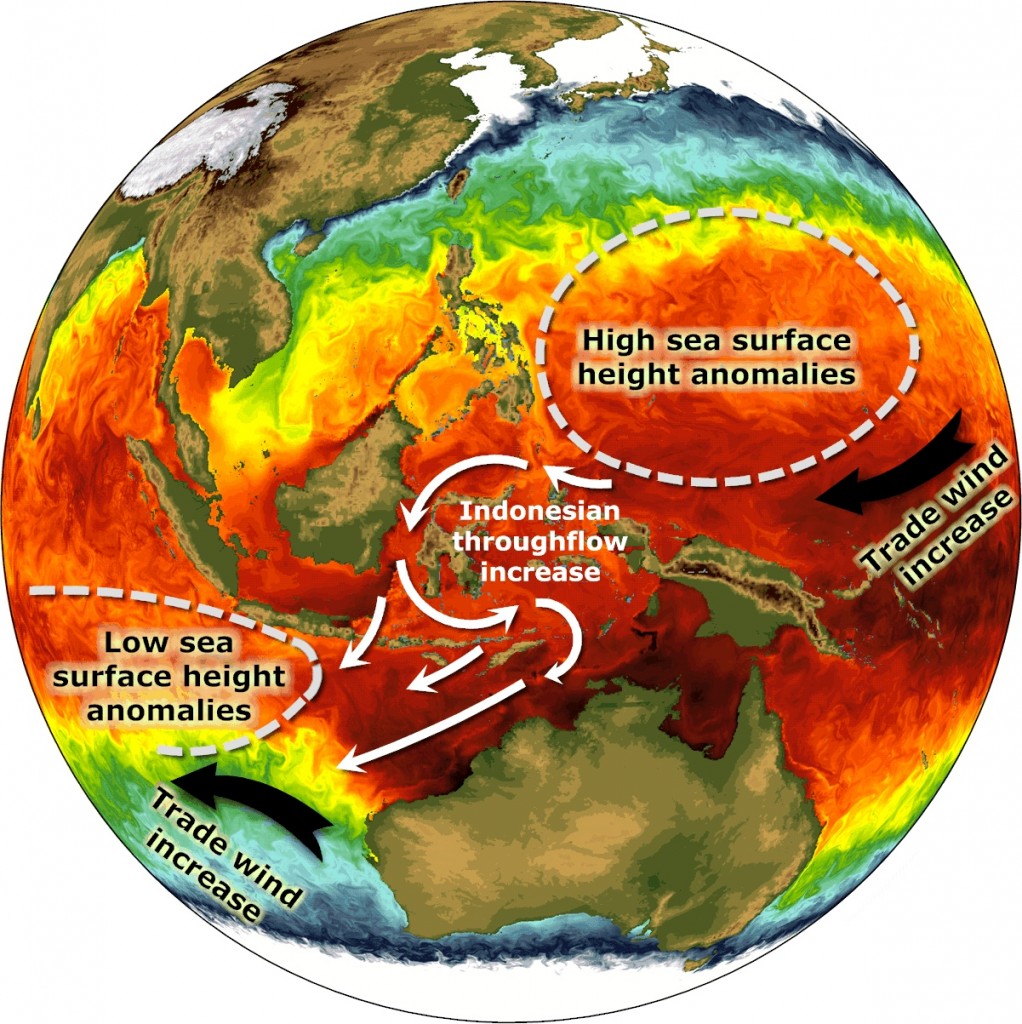The extra heat that has entered the Pacific Ocean during the period of slow surface warming since 1998 has been transferred to the Indian Ocean, reports a study published online in Nature Geoscience. The findings reconcile reports of an enhanced heat uptake in the Pacific Ocean over the past 15 years or so with an observed decrease in the heat that is stored there.
Global mean surface temperatures have nearly stabilized since 1998 despite observations at the top of the atmosphere suggesting that the Earth has continued to warm. A significant portion of this heat is believed to have entered the Pacific Ocean, but measurements of the Pacific’s heat content indicate that it has actually been decreasing.

Illustration of increased trade winds in the Pacific and Indian Oceans during the recent warming hiatus, which increased the inter-ocean pressure gradient and thus enhanced Indonesian throughflow. This resulted in an abrupt increase of Indian Ocean heat content. Credit: Sang-Ki Lee
Sang-Ki Lee and colleagues analysed observational data along with simulations with a global ocean–sea ice model, and find that the increased heat uptake in the Pacific Ocean has been compensated by increased heat transport to the Indian Ocean, through the passages of the Indonesian Archipelago. The heat gain in the Indian Ocean accounts for 70% of the heat storage in the top 700 m of the global ocean. The authors suggest that if this transport persists, the accumulating heat in the Indian Ocean could be projected into the Atlantic Ocean, which has already heated substantially since the mid-twentieth century.
In an accompanying News & Views, Jérôme Vialard writes, “Only through [ sustained ] observations will we be able find out if heat that has been stored in the Indian Ocean over the past decade […] will contribute to a period of fast warming after the hiatus has ended.”